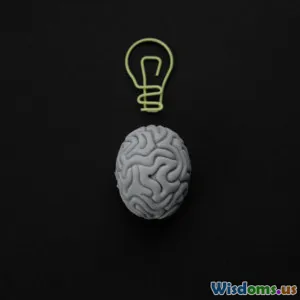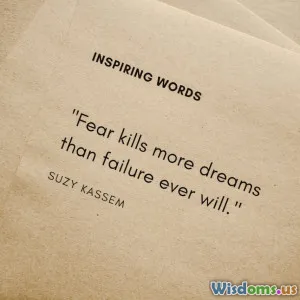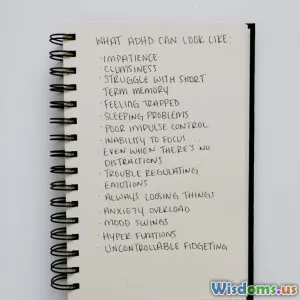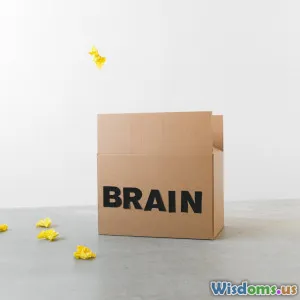
Cognitive Functions in Dreams
8 min read Explore how cognitive functions shape our dreams and reveal the brain's mysterious workings during sleep. (0 Reviews)
Cognitive Functions in Dreams: Unlocking the Brain's Nighttime Mysteries
Dreams have long fascinated humanity, sparking curiosity about their origins and meanings. At the core of dreaming lies the interplay of various cognitive functions—memory, perception, emotion, and reasoning—that not only generate vivid nighttime experiences but also reflect complex brain processes. Recent advances in neuroscience have enriched our understanding of how these cognitive functions operate during dreaming, revealing their critical roles both during sleep and waking life. This article digs into the cognitive mechanisms behind dreams, illustrating how the brain’s nighttime activity intertwines with daily mental functioning.
Introduction: The Brain's Theater of the Night
Imagine your brain as a theater stage where, each night, a dynamic play unfolds guided by cognitive actors—memory retrieval, sensory simulation, emotional processing, and creative problem-solving. Dreams are this intricate performance, blending fragments of memories, feelings, and sensory cues into surreal narratives.
For centuries, dreams were largely mysterious, relegated to philosophy and mysticism. However, modern brain science frames dreaming as a product of active cognitive functioning during specific sleep phases, especially rapid eye movement (REM) sleep.
This evolving framework prompts us to ask: Which cognitive functions dominate dreaming? How do they interact, and what does this reveal about brain function across sleep and wakefulness? To answer these, we explore key cognitive components implicated in dream generation and processing.
The Architecture of Cognitive Functions in Dreams
Dreams are not random; they follow identifiable cognitive patterns shaped by the brain's functional architecture. Core cognitive functions engaged in dreaming include:
1. Memory Integration and Simulation
Memory plays a fundamental role in dream content. The hippocampus and associated cortical regions, critical in memory consolidation, interact actively during REM sleep. Research shows that dreams often recombine fragments of episodic memories with semantic knowledge to form novel scenarios.
A 2019 study in Nature Communications demonstrated that during REM sleep, the brain reactivates neural ensembles associated with recent experiences, but with modifications, suggesting a creative rehearsal rather than mere replay.
Example: You might dream of walking through a hybrid version of your childhood home and a recent vacation spot—an amalgamation born from memory integration.
2. Perception and Sensory Simulation
Though sleeping, the brain simulates sensory input, producing vivid perceptual experiences.
The secondary visual cortex and other sensory areas show entrainment during REM, contributing to detailed sights, sounds, and sometimes touches or smells in dreams. This sensory simulation constructs immersive scenes that our waking mind can experience viscerally.
Studies using functional MRI confirm that brain regions responsible for visual processing reactivate during dreaming, mirroring wakeful perception.
3. Emotional Processing and Regulation
Emotions are amplified in dreams. The amygdala, the brain’s fear and emotion center, is highly active during REM sleep, while parts of the prefrontal cortex that temper emotional response show reduced activity.
This imbalance helps explain why dreams sometimes feel overwhelmingly intense or bizarre emotionally.
Research by the University of North Carolina (2009) found REM sleep helps recalibrate emotional circuits, reducing daytime emotional reactivity by facilitating nocturnal emotional problem-solving.
4. Logical and Executive Functions: A Mixed Story
Interestingly, certain executive functions like logical reasoning and volition diminish in dreams, contributing to illogical dream events.
The dorsolateral prefrontal cortex, governing critical thinking and working memory, shows lower activation during REM. "This inhibition affects our capacity for critical judgment,” says sleep scientist Dr. Tore Nielsen, “allowing bizarre dream narratives to feel real in the moment."
However, other executive-like capabilities akin to problem-solving sometimes emerge, reflecting the brain's creative mode.
Dreaming as Cognitive Problem-Solving
Beyond passive replay, dreams can facilitate solving problems. Some famous instances include:
-
Kekulé’s Benzene Dream: Chemist August Kekulé reportedly dreamt of a snake seizing its own tail, inspiring the cyclic structure of benzene.
-
Otto Loewi’s Dream Experiment: Loewi dreamed of an experiment that later confirmed chemical neurotransmission.
Cognitive science suggests the relaxed constraints of dreaming enhance divergent thinking, encouraging novel connections absent in conscious deliberation. Neural plasticity and associative networks may be more active, helping generate innovative solutions.
A study published in Psychological Science (2011) found that REM sleep improves performance on creative problem-solving tasks by fostering novel associations.
Real-World Insights and Practical Implications
Understanding cognitive functions in dreams has implications across psychology, neurology, and even artificial intelligence.
Memory Consolidation and Learning
Educational neuroscience leverages sleep to enhance memory retention, with dreams potentially supporting this consolidation by rehearsing learned material in novel ways.
Mental Health
Disturbances in dreaming (e.g., nightmares, REM behavior disorder) often correlate with emotional dysregulation and conditions like PTSD or depression. Studying dreaming cognition offers pathways to targeted therapies.
AI and Cognitive Models
Dreaming provides analogies for machine learning techniques involving memory replay and creative synthesis, inspiring novel algorithmic approaches.
Conclusion: Dreams as Cognitive Windows into the Brain
Dreams vividly exemplify the brain’s multifaceted cognitive operations during sleep. They incorporate memory integration, simulate perception, process emotions intensely, and modulate reasoning. Acting as a nocturnal cognitive laboratory, dreams reveal how the brain consolidates experiences, regulates emotions, and fosters creativity.
By illuminating these intricate functions, brain science bridges the mysterious world of dreams with empirical understanding—offering insights not only into sleep but into the essence of cognition itself. Next time you wake from a dream, consider it not just a fleeting fantasy but a window into your brain’s spectacular cognitive symphony operating under the cover of darkness.
References:
- Stickgold, R. (2005). Sleep-dependent memory consolidation. Nature, 437(7063), 1272-1278.
- Nielsen, T. (2000). A review of mentation in REM and NREM sleep: "Covert" REM sleep as a possible reconciliation of two opposing models. Behavioral and Brain Sciences, 23(6), 851-866.
- Walker, M.P., & Stickgold, R. (2010). Overnight alchemy: sleep-dependent memory evolution. Nature Reviews Neuroscience, 11(3), 218-228.
- Cai, D. J., Mednick, S. A., Harrison, E. M., Kanady, J. C., & Mednick, S. C. (2009). REM, not incubation, improves creativity by priming associative networks. Proceedings of the National Academy of Sciences, 106(25), 10130-10134.
Rate the Post
User Reviews
Popular Posts



















